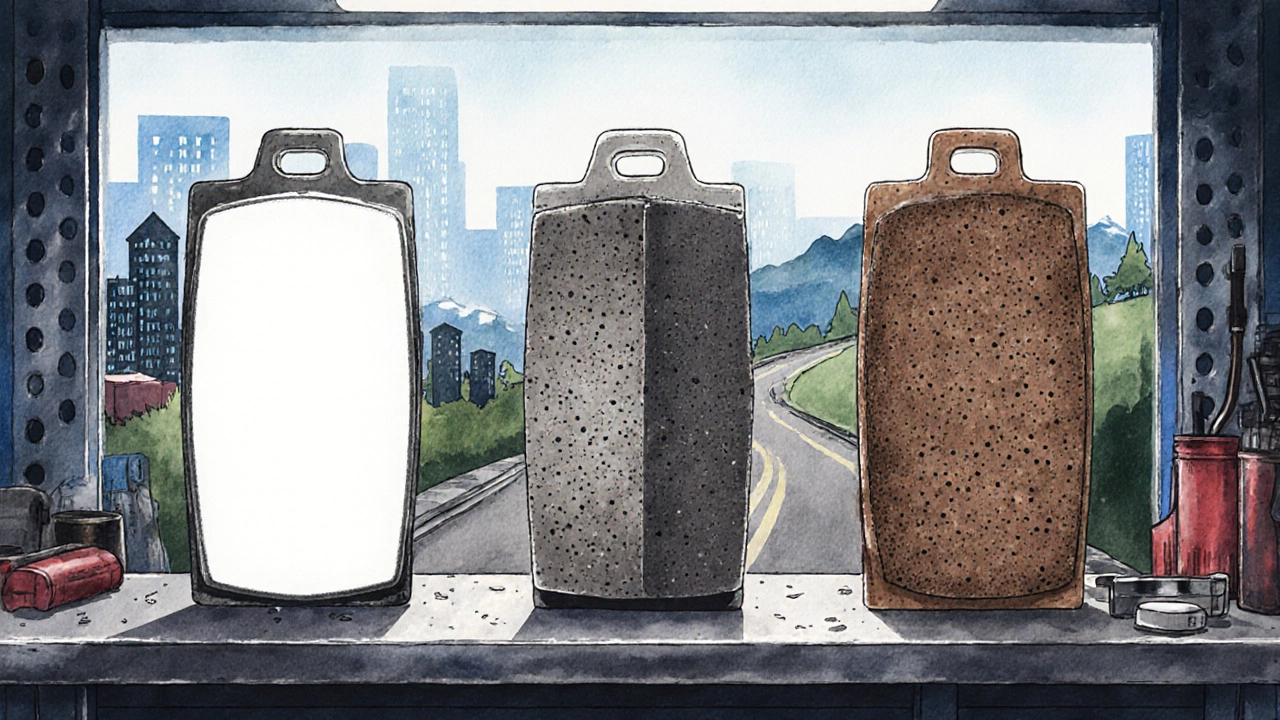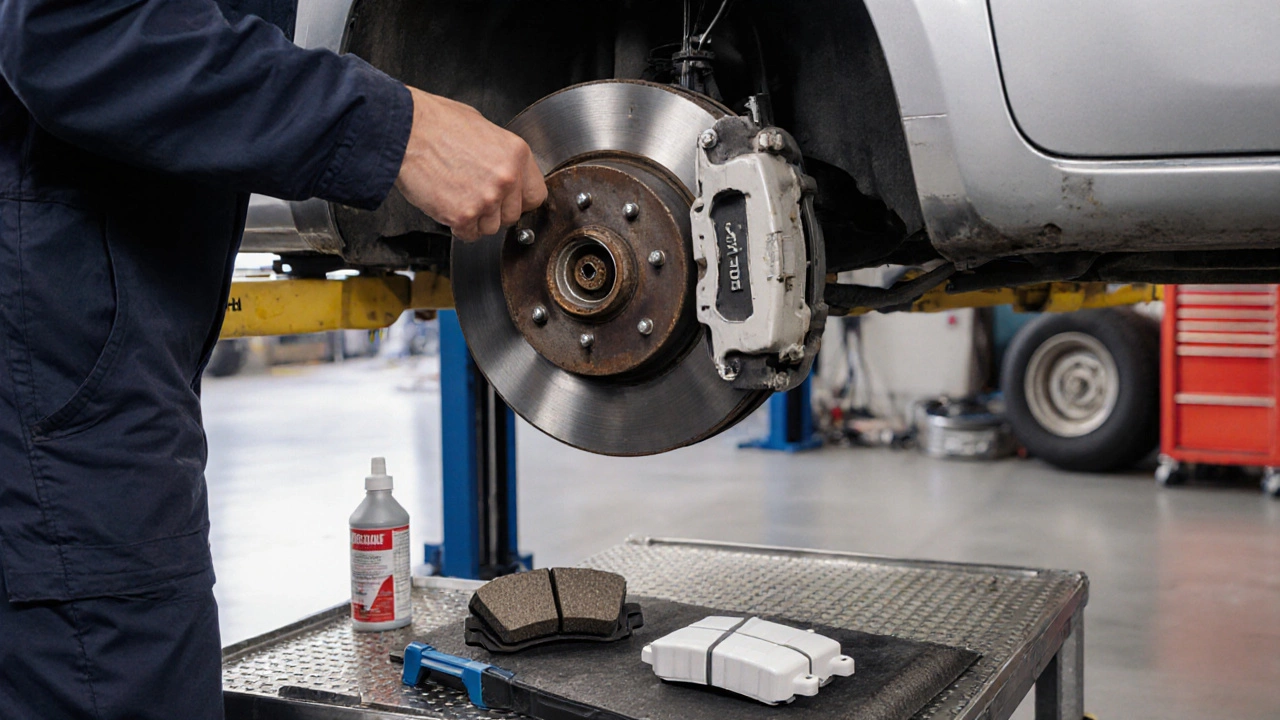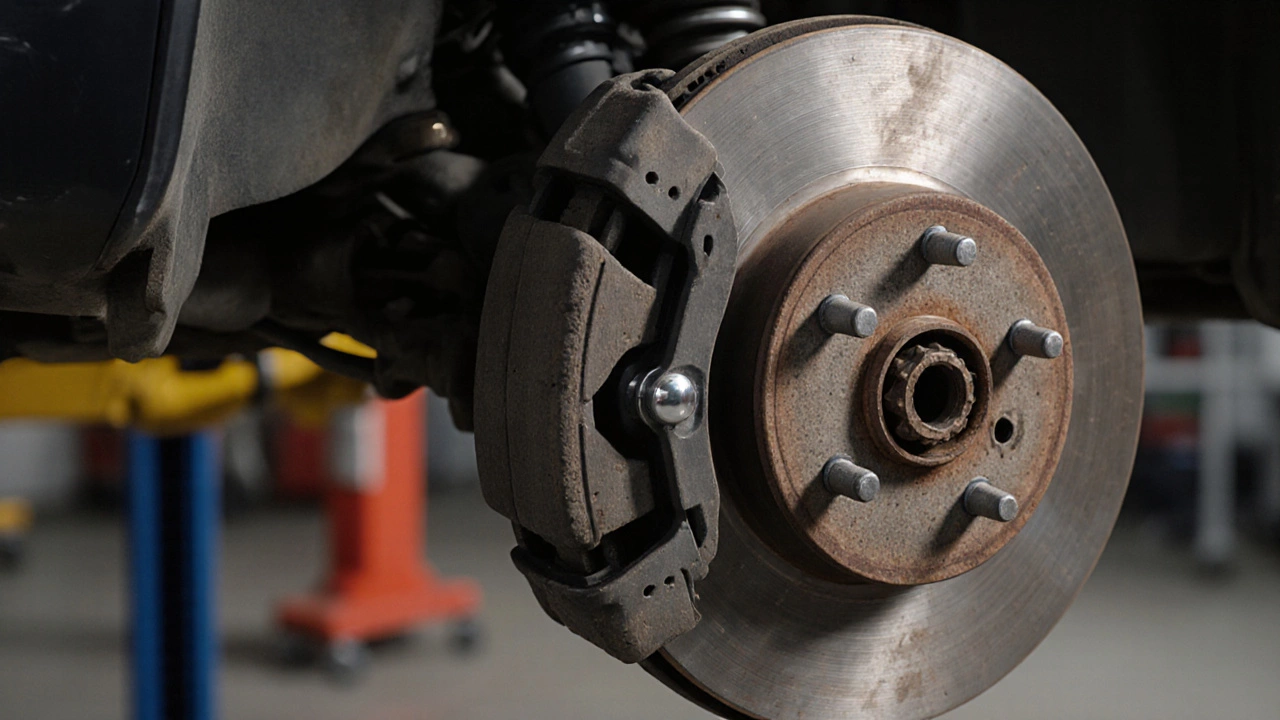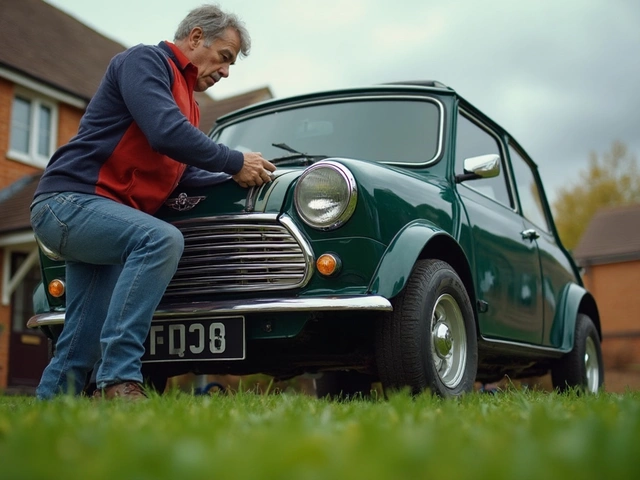Brake Pad Replacement Calculator
Estimated Brake Pad Replacement Interval
Recommended Mileage:
Estimated Timeframe:
Factors Considered:
Wondering when it’s time to swap out those squeaky brake pads is a critical wear component that presses against the brake disc to slow your car? You’re not alone. Many drivers guess based on mileage alone, but the truth is a bit more nuanced. This guide breaks down the signs, the numbers, and the factors that dictate the ideal brake pad replacement interval for everyday motorists in the UK.
Key Takeaways
- Typical brake pad life ranges from 30,000km to 70,000km, but driving habits and pad material can shift that window.
- Listen for squealing, feel for vibration, and inspect the wear indicator - they’re the fastest alarms.
- Ceramic pads last longer in city traffic, while semi‑metallic pads cope better with high‑performance driving.
- Regularly checking brake fluid, rotors, and calipers helps you spot hidden wear before it bites.
- Plan a professional inspection every 20,000km to keep braking distance consistent and safe.
How to Spot Worn Brake Pads
Before you count kilometres, look for these tell‑tale signs:
- Squealing or squeaking - most modern pads have a tiny metal tab that scrapes the rotor when the friction material is thin. The sound is high‑pitched and gets louder as you brake.
- Pulsing or vibration - a warped rotor or uneven pad wear will shake the pedal, especially at higher speeds.
- Longer stopping distances - if you notice you need to press the pedal farther to achieve the same slowdown, the pads have lost grip.
- Visual inspection - pop the wheel and check the pad thickness. Most manufacturers recommend replacement when the material is under 3mm.
Many cars now feature an electronic wear indicator that lights up the dashboard. Treat that alert as a hard stop, not a suggestion.
Typical Lifespan Guidelines
There isn’t a one‑size‑fits‑all mileage, but the industry generally cites these ranges:
- City driving - 30,000km to 45,000km. Frequent stops and starts wear the pads faster.
- Mixed driving - 45,000km to 60,000km. A blend of highway cruising and urban traffic balances wear.
- Highway‑only - 60,000km to 70,000km. Constant speeds mean less friction cycles.
These numbers assume average driver weight, typical UK road conditions, and standard OEM pad material.

Factors That Influence Replacement Frequency
Beyond mileage, several variables push your brake pad life up or down:
| Factor | Impact | Typical Adjustment |
|---|---|---|
| Driving style | Aggressive braking shortens life | +10,000km if you brake smoothly |
| Vehicle weight | Heavier cars demand more friction | -5,000km for SUVs |
| Brake pad material | Ceramic lasts longer, metallic offers better heat resistance | +15,000km for ceramic vs. semi‑metallic |
| Road conditions | Mountainous or gravel roads increase wear | -7,000km in hilly terrain |
| Climate | Moisture and salt (common on UK winter roads) accelerate corrosion | -3,000km in coastal areas |
Consider each factor when you log your next service appointment. A driver who sticks to the motorway and uses ceramic pads could comfortably hit the 70,000km mark, while a city‑centric driver with semi‑metallic pads on a heavy hatchback may need a change by 35,000km.
Brake Pad Material Comparison
| Material | Typical Lifespan (km) | Noise Level | Heat Tolerance | Best For |
|---|---|---|---|---|
| Ceramic | 55,000‑70,000 | Low | High | Daily commuters, city drivers |
| Semi‑Metallic | 35,000‑50,000 | Medium‑High | Very High | Performance cars, mountainous routes |
| Organic (Non‑Asbestos) | 30,000‑45,000 | Low‑Medium | Medium | Light‑weight vehicles, budget‑focused owners |
Choosing the right material is the single biggest lever you have on pad life. If you’re not chasing track times, ceramic pads usually give the longest, quietest ride.
Maintenance Tips to Extend Pad Life
Small habits go a long way. Here’s a checklist you can keep in your glove box:
- Brake gently: Anticipate stops and let the car slow down before you fully apply the pedal.
- Avoid riding the brake: On hills, switch to a lower gear instead of holding the pedal down.
- Keep rotors clean: Scored rotors increase pad wear. Have a mechanic machine or replace them if they’re below the minimum thickness.
- Check brake fluid annually. Old fluid can corrode the brake caliper and affect pad performance.
- Inspect for debris: Small stones can embed in the pad surface, causing uneven wear.

What to Expect During a Professional Replacement
A qualified garage will typically go through these steps:
- Lift the wheel and remove the tyre.
- Detach the brake caliper and suspend it so it doesn’t strain the brake line.
- Slide out the old brake pads and compare thickness against the manufacturer’s minimum.
- Inspect the brake disc for warping or scoring; resurface or replace if needed.
- Install the new pads, re‑mount the caliper, and bleed the brake system to remove any air bubbles.
- Conduct a test drive to verify consistent pedal feel and stopping distance.
In the UK, a typical replacement (including labour) runs between £120 and £250 per axle, depending on vehicle make and pad material.
Quick Checklist Before Your Next Service
- Listen for any squeal or grinding.
- Feel for pedal pulsation or a soft brake pedal.
- Measure pad thickness; replace if ≤3mm.
- Review driving conditions over the past 10,000km.
- Schedule a professional inspection if any red flags appear.
Frequently Asked Questions
How many kilometres can I expect from standard brake pads?
For an average UK hatchback with mixed city‑highway driving, most OEM ceramic pads last about 55,000km to 65,000km. Semi‑metallic pads on the same car typically need replacing around 40,000km.
Do I need to replace brake discs when I change pads?
Not always. If the disc thickness is above the minimum spec (usually 22mm for passenger cars) and there’s no visible scoring, you can keep them. A professional inspection will confirm.
Can I replace brake pads myself?
DIY is possible if you’re comfortable lifting the car, removing the wheel, and following a step‑by‑step guide. However, you must also bleed the brake system and check for air bubbles - a mistake here can compromise safety. Many UK motorists prefer a qualified garage for peace of mind.
Why does my car’s brake warning light come on even though the pads look fine?
The warning light can be triggered by low brake fluid level, a sensor fault, or a worn wear‑indicator ring that hasn’t been replaced. A quick diagnostic scan will pinpoint the exact cause.
Is it worth paying more for premium brake pads?
Premium ceramic pads usually cost 15‑20% more but can extend service life by up to 20,000km and stay quieter. If you drive mainly in city traffic, the extra upfront cost often pays off in fewer replacements.




